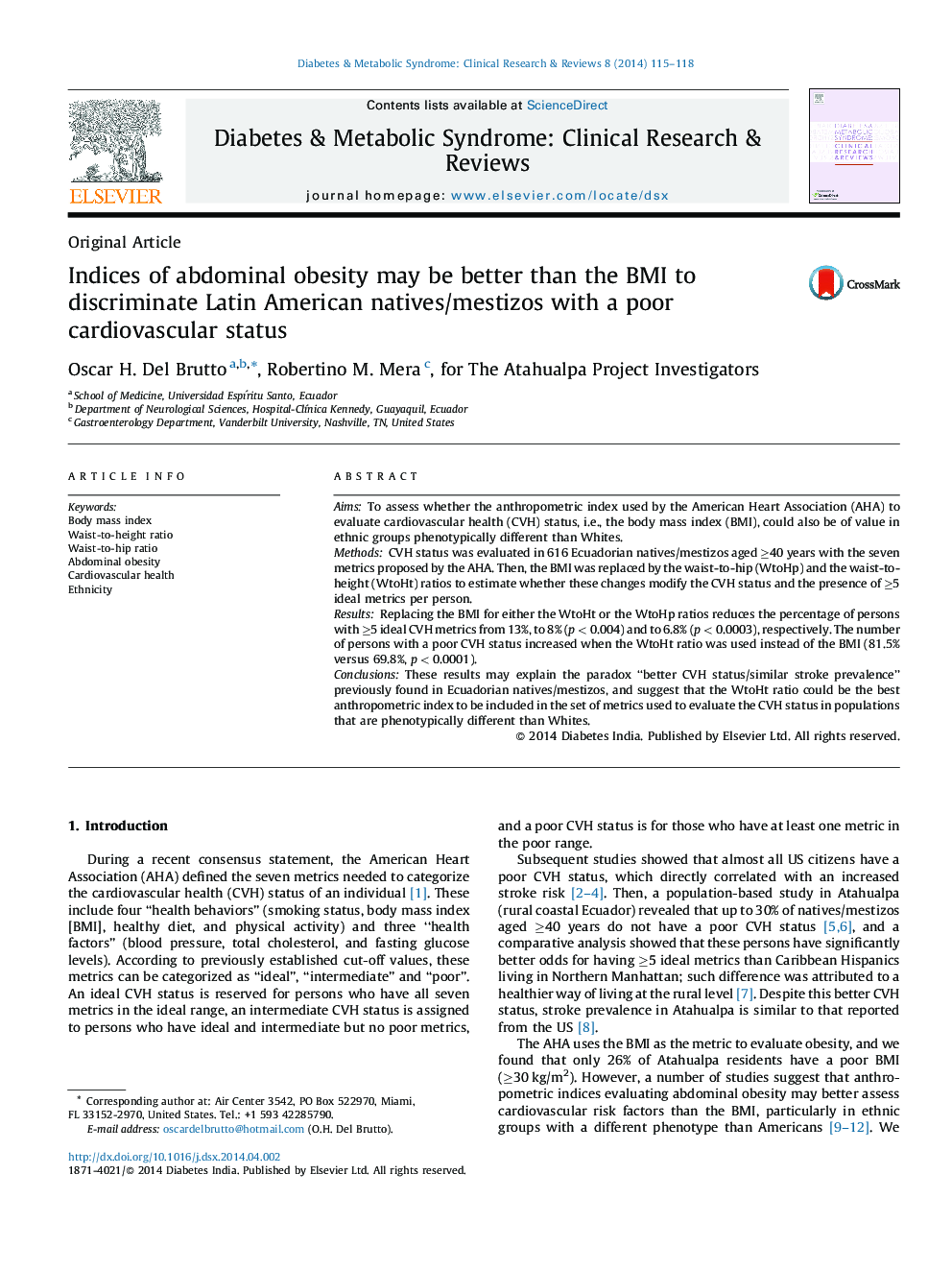| Article ID | Journal | Published Year | Pages | File Type |
|---|---|---|---|---|
| 2909899 | Diabetes & Metabolic Syndrome: Clinical Research & Reviews | 2014 | 4 Pages |
AimsTo assess whether the anthropometric index used by the American Heart Association (AHA) to evaluate cardiovascular health (CVH) status, i.e., the body mass index (BMI), could also be of value in ethnic groups phenotypically different than Whites.MethodsCVH status was evaluated in 616 Ecuadorian natives/mestizos aged ≥40 years with the seven metrics proposed by the AHA. Then, the BMI was replaced by the waist-to-hip (WtoHp) and the waist-to-height (WtoHt) ratios to estimate whether these changes modify the CVH status and the presence of ≥5 ideal metrics per person.ResultsReplacing the BMI for either the WtoHt or the WtoHp ratios reduces the percentage of persons with ≥5 ideal CVH metrics from 13%, to 8% (p < 0.004) and to 6.8% (p < 0.0003), respectively. The number of persons with a poor CVH status increased when the WtoHt ratio was used instead of the BMI (81.5% versus 69.8%, p < 0.0001).ConclusionsThese results may explain the paradox “better CVH status/similar stroke prevalence” previously found in Ecuadorian natives/mestizos, and suggest that the WtoHt ratio could be the best anthropometric index to be included in the set of metrics used to evaluate the CVH status in populations that are phenotypically different than Whites.
